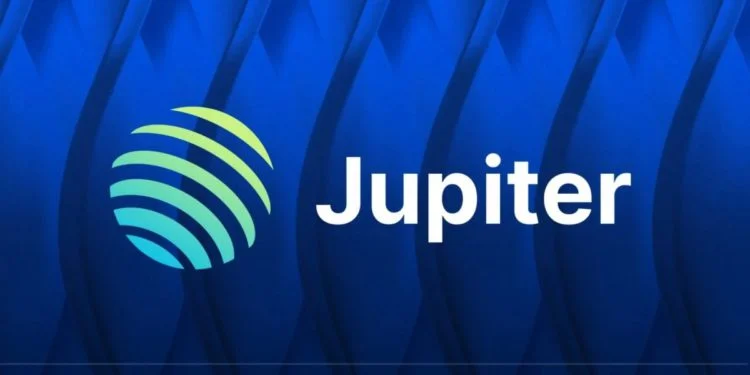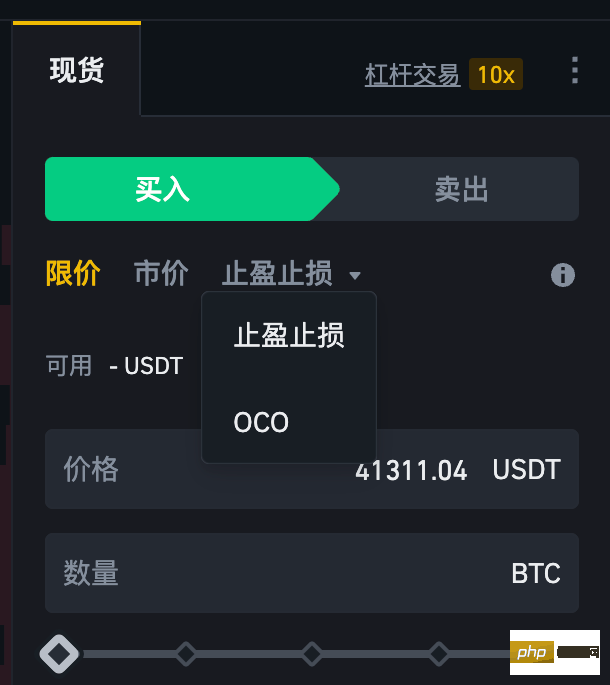How does Ethereum Reth achieve 1GB gas per second? We started building Reth in 2022 to provide elasticity for Ethereum L1 while solving the execution layer scaling problem on L2. Today, we’re excited to share how Reth plans to achieve 1GB gas per second L2 throughput in 2024, and our long-term roadmap for how to exceed that goal. We invite the entire ecosystem to join us in pushing the performance frontier and rigorous benchmarking in crypto. Today, the editor of this website will give you a detailed introduction to how Reth achieves 1GB gas per second. Friends who like Ethereum Reth should not miss it!

We emphasize gas per second and use it to comprehensively evaluate EVM network performance while capturing computing and storage costs. Networks such as Solana, Sui, or Aptos are not included due to their unique cost models. We encourage efforts to harmonize cost models across all blockchain networks to enable comprehensive and fair comparisons.
We are developing a set of non-stop benchmarking tools for Reth to replicate real workloads. Our requirement for nodes is to comply with the TPC benchmark.
2. How does Reth achieve 1GB gas per second? Or even higher?
Part of our motivation for creating Reth in 2022 was our desperate need for a client built specifically for web rollups. We believe our path forward is promising.
Reth has reached 100-200MB gas per second during real-time synchronization (including sender recovery, executing transactions and calculating the trie of each block); so, to achieve our short-term goal of 1GB gas per second, it needs to Expand it another 10 times.
As Reth grows, our expansion plans must find a balance between scalability and efficiency:
Vertical expansion: Our goal is to maximize Utilize every "box" to its full potential. By optimizing how each individual system processes transactions and data, we can greatly improve overall performance while also making individual node operators more efficient.
Horizontal Scaling: Despite optimizations, the sheer transaction volume at web scale exceeds the processing capacity of any single server. To deal with this situation, we considered deploying a horizontal scaling architecture similar to the Kubernetes model of blockchain nodes. This means spreading the workload across multiple systems to ensure that no one node can become a bottleneck.
The optimizations we discuss here will not involve state growth solutions, which we will discuss separately in other articles. Here's an overview of our plans to achieve this:

Throughout the technology stack, we've also optimized IO and CPU using the actor model to support various parts of the stack All can be deployed as a service and have fine-grained control over their use. Finally, we are actively evaluating alternative databases but have not yet finalized one.
2.1 Reth’s Vertical Scaling Roadmap
Our vertical scaling goal is to maximize the performance and efficiency of the server or laptop running Reth.
(1) Just-In-Time EVM and Ahead-of-Time EVM
In a blockchain environment like Ethereum Virtual Machine (EVM) , execution of bytecode occurs through an interpreter, which processes instructions sequentially. This method will bring some overhead, because the native assembly instructions are not executed directly, but the operation is performed through the VM layer.
Just-in-time (JIT) compilation solves this problem by converting bytecode into native machine code before execution, thereby improving performance by bypassing the VM's interpretation process. This technology can compile contracts into optimized machine code in advance and has been well used in other virtual machines such as Java and WebAssembly.
However, the JIT may be vulnerable to malicious code designed to exploit JIT process vulnerabilities or be too slow to run in real time during execution. Reth will compile the most demanding contracts ahead of time (AOT) and store them on disk, preventing untrusted bytecode from trying to abuse our native code compilation process during live execution.
We have been developing a JIT/AOT compiler for Revm and are currently integrating it with Reth. We will open source it as soon as we complete the benchmarks in the coming weeks. On average, about 50% of the execution time is spent in the EVM interpreter, so about a 2x improvement in EVM execution should be required, but in some cases with greater computational demands, the impact may be greater. Over the next few weeks we will share our benchmarks and integrate our own JIT EVM in Reth.

(2) Parallel EVM
The concept of Parallel Ethereum Virtual Machine (Parallel EVM) supports processing of multiple transactions at the same time, which is similar to the traditional EVM serial The execution model is different. We have the following two paths:
Historical synchronization: Historical synchronization allows us to calculate the best possible parallel schedule by analyzing historical transactions and identifying all historical state conflicts.
Real-time synchronization: For real-time synchronization, we can use technology similar to Block STM to perform speculative execution without any additional information (such as access lists). The algorithm performs poorly during periods of severe state contention, so we want to explore switching between serial and parallel execution based on workload conditions, as well as statically predict which storage slots will be accessed to improve parallelism quality.
According to our historical analysis, approximately 80% of Ethereum storage slots are independently accessible, which means that parallelism can increase EVM execution efficiency by 5 times.

(3) Optimizing state commitment
In the Reth model, calculating the state root is a process independent of executing transactions, allowing use without obtaining trie information Standard KV storage. This currently takes >75% of the end-to-end time to seal a block, which is a very exciting area of optimization.
We identified the following two “easy wins” paths to improve state root performance by 2-3x without any protocol changes:
Fully parallelize the state root: Right now we only recompute the storage tree for changed accounts in parallel, but we can go a step further and compute the account tree in parallel while the storage root job completes in the background.
Pipelined state root: During execution, intermediate trie nodes are prefetched from disk by notifying the state root service of the storage slots and accounts involved.
In addition to this, we can also explore some paths forward by deviating from the Ethereum L1 state root activity:
More frequent state root calculations : The state root is not calculated on every block, but once every T blocks. This reduces the total time spent investing in the state root of the entire system, which is probably the simplest and most effective solution.
Tracking the state root: Instead of computing the state root on the same block, let it lag a few blocks behind. This allows execution to advance without blocking state root computation.
Replace RLP encoder & Keccak256: It may be cheaper to merge bytes directly and use a faster hash function (such as Blake3) than to use RLP encoding.
Wider Trie: Increase the N-arity of child nodes of the tree to reduce the increase in IO due to the logN depth of the trie.
A few questions here:
The above changes have a heavy impact on light clients, L2, bridges, coprocessors and other dependent accounts and What are the secondary impacts of protocols that store proofs?
Can we optimize state commitments for SNARK proofs and native execution speed at the same time?
What is the broadest state commitment we can get with our existing tools? What are the secondary effects on witness size?
2.2 Reth’s horizontal scaling roadmap
We will implement many of the above throughout 2024 to achieve the goal of 1GB gas per second.
However, vertical scaling eventually encounters physical and practical limitations. No single machine can handle the world's computing needs. We believe that there are two paths here that can support us to expand by introducing more boxes after the load increases:
(1) Multiple Rollup Reth
Today's L2 stack needs to run multiple Services to trace the chain: L1 CL, L1 EL, L1 -> L2 derived functions (possibly bundled with L2 EL), and L2 EL. While this is great for modularity, things get more complicated when running multiple node stacks. Imagine having to run 100 rollups!
We want to allow rollups to be released simultaneously as Reth evolves and reduce the operational costs of running thousands of rollups to almost zero.
We are already working on this in our Execution Scaling project, with more to come in the coming weeks.
(2) Cloud native Reth
High-performance sorters may have many demands on a single chain, they need to be scaled, and one machine cannot meet their needs. This is not possible with today's single-node deployments.
We hope to support running cloud-native Reth nodes, deploy them as a service stack that can automatically scale based on computing needs, and use seemingly unlimited cloud object storage for persistent storage. This is a common architecture in serverless database projects such as NeonDB, CockroachDB or Amazon Aurora.

3. Future prospects
We hope to gradually roll out this roadmap to all Reth users. Our mission is to make 1GB gas per second and higher accessible to everyone. We will be testing the optimization on Reth AlphaNet, and we hope people will use Reth as an SDK to build optimized high-performance nodes.
There are some questions we don’t have answers for yet.
How does Reth help improve the performance of the entire L2 ecosystem?
How do we properly measure the worst-case scenarios that may occur with some of our optimizations in general?
How do we deal with potential disagreements between L1 and L2?
We don’t have answers to many of these questions yet, but we have a lot of promising initial ideas that will keep us busy for a while, and we hope to see these efforts take off in the future. Months bear fruit.
The above is the detailed content of An article explaining how Ethereum Reth achieves 1GB gas per second. For more information, please follow other related articles on the PHP Chinese website!
 世界十大USDT交易所哪个正规?盘点10大靠谱USDT购买平台Jan 31, 2024 am 08:21 AM
世界十大USDT交易所哪个正规?盘点10大靠谱USDT购买平台Jan 31, 2024 am 08:21 AMUSDT作为一种备受关注的稳定货币,随着区块链技术的发展和加密货币市场的普及,逐渐占据了市场份额。但是在众多的usdt购买平台中,我们如何才能找到真正可靠、正规的交易所呢?以下是全球十大可靠usdt购买平台的盘点。盘点10大靠谱USDT购买平台1.OKx欧易OKEx是一家领先的数字资产交易平台,也是购买USDT的可靠选择。它提供了全面的交易功能和多样化的交易选择,并采取了多种安全措施来保护用户的资金和交易安全。通过OKEx购买USDT,用户可以享受高效、安全的交易体验。欧易OKX是全球领先的数字
 世界知名usdt交易所排名前十 盘点十大usdt交易所Jan 31, 2024 am 08:03 AM
世界知名usdt交易所排名前十 盘点十大usdt交易所Jan 31, 2024 am 08:03 AM世界知名USDT交易所排名前十USDT(Tether)是一种基于比特币区块链技术的数字货币,与美元挂钩,被广泛应用于加密货币交易。USDT交易所是提供USDT交易服务的平台,随着加密货币市场的不断发展,各国涌现了许多知名的USDT交易所。本文将盘点并深度分析全球排名前十的USDT交易所。1.币安(Binance)币安是全球最大的USDT交易所,也是市值最高的加密货币交易所之一。成立于2017年的币安,凭借强大的技术支持、丰富的交易品种和良好的用户体验,迅速成为行业领军者。币安拥有全球用户基础,提
 国内合约量化交易软件排行榜最新Jan 31, 2024 am 11:51 AM
国内合约量化交易软件排行榜最新Jan 31, 2024 am 11:51 AM一、前言在金融市场中,合约量化交易已经成为了一种更为高效和智能的交易方式。随着技术的不断进步,越来越多的企业或个人投资者开始关注并使用各种量化交易软件。本文将会介绍合约量化交易软件排行榜,以帮助投资者选择适合自己的量化交易软件。二、合约量化交易软件排行榜欧易OKX欧易OKX是国内较为优秀的数字货币交易平台之一,属于OKEx旗下的分支机构。欧易OKX支持多种数字货币的交易,包括比特币、以太坊、莱特币、瑞波等等,还提供了杠杆交易、期货合约等高级交易服务。用户可以通过手机APP或PC端网站进行交易操作
 Meme币WEN爆火!Jupiter单日交易量超越Uniswap 登上DEX榜首Jan 31, 2024 am 08:48 AM
Meme币WEN爆火!Jupiter单日交易量超越Uniswap 登上DEX榜首Jan 31, 2024 am 08:48 AM根据CoinGecko数据,过去24小时,Solana生态DeFi聚合平台Jupiter的交易量超过5.22亿美元,占比达18.3%,超过了Uniswap在以太坊上的V2和V3协议交易量总和(约5亿美元)。DEX交易量排行在Jupiter的单日交易量中,Meme币WEN相关交易对的交易量超过6000万美元。Jupiter的共同创办人meow在25日宣布申领WEN已经开放。过去6个月内与Jupiter互动或拥有SolanaSaga手机的人都有资格申领WEN。WEN空投领取截止时间为今晚11点,每位
 现在还有那些虚拟币软件是可以使用的?好用的交易平台app推荐分享!Feb 01, 2024 am 08:36 AM
现在还有那些虚拟币软件是可以使用的?好用的交易平台app推荐分享!Feb 01, 2024 am 08:36 AM现在还有哪些虚拟币软件是可以使用的?好用的交易平台app推荐分享!随着虚拟币行业的不断发展,越来越多的人开始投资虚拟币。那么,现在还有哪些虚拟币软件是可以使用的呢?下面就来介绍一下。1.聚币网聚币网是一家成立多年的比特币交易平台,一直以来都致力于保障用户的资产安全。为了保证用户的数字资产安全,该平台采用了多层加密机制来存储用户的资产。该平台功能齐全,支持比特币、以太坊等虚拟币的交易,并提供了OTC等服务,为用户提供便利的交易环境。交易界面简洁易懂,操作方便,即使是新手也能轻松上手使用。2.币安币
 什么是OCO订单?Apr 25, 2023 am 11:26 AM
什么是OCO订单?Apr 25, 2023 am 11:26 AM二选一订单(OneCancelstheOther,简称OCO)可让您同时下达两个订单。它结合了限价单和限价止损单,但只能执行其中一个。换句话说,只要其中的限价单被部分或全部成交、止盈止损单被触发,另一个订单将自动取消。请注意,取消其中一个订单也会同时取消另一个订单。在币安交易平台进行交易时,您可以将二选一订单作为交易自动化的基本形式。这个功能可让您选择同时下达两个限价单,从而有助于止盈和最大程度减少潜在损失。如何使用二选一订单?登录您的币安帐户之后,请前往基本交易界面,找到下图所示的交易区域。点
 Magic Eden多链钱包上线!一站式NFT管理、免费铸造、空投机会Feb 01, 2024 am 11:30 AM
Magic Eden多链钱包上线!一站式NFT管理、免费铸造、空投机会Feb 01, 2024 am 11:30 AM本站(120bTC.coM):Solana生态NFT市场龙头MagicEden,在去年3月中旬抢搭Ordinals热潮推出比特币NFT市场,如今已成为仅次于OKX交易量第二大的市场。此外,这也意味着原本仅支持Solana和Polygon(2022/11支持)的MagicEden,正式拓展到比特币网络,紧接着在去年3月底,再宣布支持以太坊。但MagicEden的展望不仅于此,他认为虽然他的平台支持了四个公链的市场,但用户需要为每个链连线不同的钱包,太不方便,对于要如何实现统一的市场,提升用户体验,
 欧交易V6.4.30欧意有多少中国用户Jan 31, 2024 pm 03:30 PM
欧交易V6.4.30欧意有多少中国用户Jan 31, 2024 pm 03:30 PM欧交易是一款可以充值的btc、eth、usdt、doge等虚拟货币交易所平台,多种跨链资产,支持各国法币交易。一、欧交易推荐1、现货交易:便捷迅速的进行比特币莱特币交易。2、10年以上财务风险控制团队工作经验3、快捷方便,充值即时、提现迅速,每秒万单的高性能交易引擎,保证一切快捷方便。4、安全快捷的国内顶尖交易平台,超齐全的数字币交易服务。5、24小时开放,一对一的客户服务管理,动态信息量大;6、双重加密的系统,帮助用户可以安全放心的进行交易。7、查看比特币现货、期货、期权价格8、你可以通过判断

Hot AI Tools

Undresser.AI Undress
AI-powered app for creating realistic nude photos

AI Clothes Remover
Online AI tool for removing clothes from photos.

Undress AI Tool
Undress images for free

Clothoff.io
AI clothes remover

AI Hentai Generator
Generate AI Hentai for free.

Hot Article

Hot Tools

SublimeText3 English version
Recommended: Win version, supports code prompts!

DVWA
Damn Vulnerable Web App (DVWA) is a PHP/MySQL web application that is very vulnerable. Its main goals are to be an aid for security professionals to test their skills and tools in a legal environment, to help web developers better understand the process of securing web applications, and to help teachers/students teach/learn in a classroom environment Web application security. The goal of DVWA is to practice some of the most common web vulnerabilities through a simple and straightforward interface, with varying degrees of difficulty. Please note that this software

mPDF
mPDF is a PHP library that can generate PDF files from UTF-8 encoded HTML. The original author, Ian Back, wrote mPDF to output PDF files "on the fly" from his website and handle different languages. It is slower than original scripts like HTML2FPDF and produces larger files when using Unicode fonts, but supports CSS styles etc. and has a lot of enhancements. Supports almost all languages, including RTL (Arabic and Hebrew) and CJK (Chinese, Japanese and Korean). Supports nested block-level elements (such as P, DIV),

Notepad++7.3.1
Easy-to-use and free code editor

PhpStorm Mac version
The latest (2018.2.1) professional PHP integrated development tool







